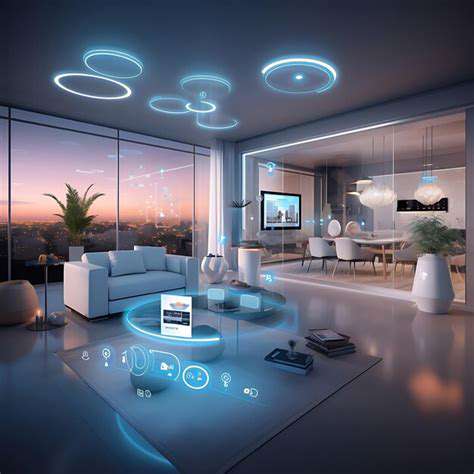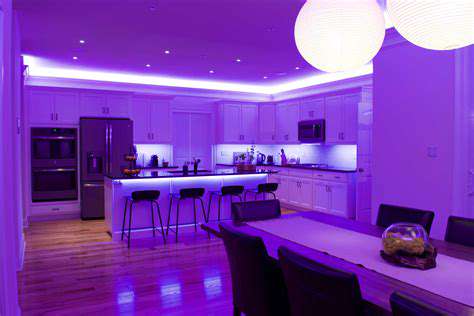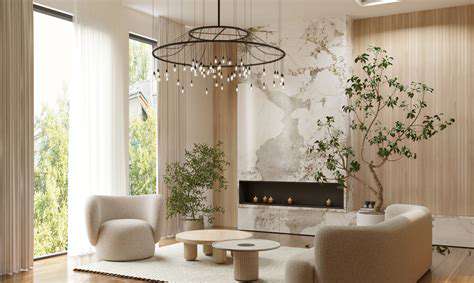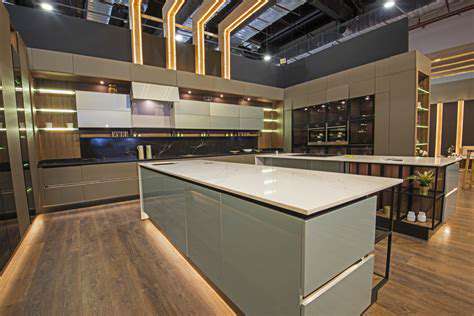Comprehensive Home Lighting Design for Modern Interiors
Creating a Personalized Lighting Narrative
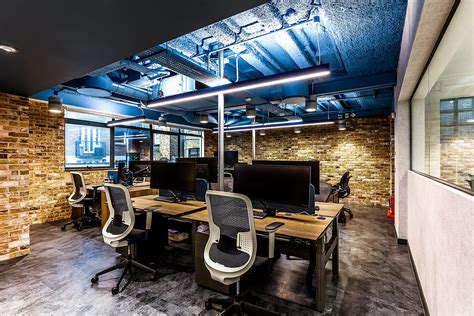
Choosing the Right Bulbs
Selecting the correct light bulbs is crucial for a personalized lighting experience. Different types of bulbs produce vastly different light qualities, impacting mood and ambiance. Consider factors like color temperature (measured in Kelvin), which ranges from warm, inviting hues to cool, crisp tones. Warm white bulbs create a cozy atmosphere, while cool white bulbs offer a brighter, more focused light. Understanding these nuances is key to achieving the desired effect in your space.
Energy-efficient options, like LEDs, offer significant advantages while maintaining desirable light quality. LEDs often provide long-lasting illumination, reducing replacement costs and contributing to environmental sustainability. They also come in a variety of color temperatures and styles, allowing for precise control of the overall lighting scheme.
Designing with Layered Lighting
Integrating various light sources creates a more dynamic and engaging atmosphere. Layered lighting, encompassing ambient, task, and accent lighting, is a hallmark of well-designed interiors. Ambient lighting provides general illumination, while task lighting focuses on specific areas for focused activities. Accent lighting highlights architectural features or artwork, adding depth and dimension to the space.
Strategic placement of these different types of lights is key to achieving a balanced and visually appealing effect. Experiment with different combinations to find the optimal configuration for your needs and preferences.
Understanding Color Temperature
Color temperature, measured in Kelvin, significantly impacts the perceived mood and atmosphere of a space. Lower Kelvin values (e.g., 2700K) produce a warm, inviting glow, often associated with relaxation. Higher Kelvin values (e.g., 5000K) offer a brighter, more crisp light, ideal for tasks requiring focused vision.
Understanding the effect of color temperature is essential for creating a personalized lighting scheme that harmonizes with the intended atmosphere and activities of each room. Different spaces will benefit from different color temperatures; for example, a living room might benefit from a warmer tone, while a kitchen might benefit from a cooler tone.
Considering Light Direction and Distribution
Understanding how light interacts with your space is key. Strategic placement of lights can direct illumination to specific areas, emphasizing desired features or creating a more welcoming environment. Light direction can significantly alter the perceived size and shape of a room. Using lamps and spotlights can draw attention to specific artworks or focal points. Proper lighting distribution ensures the entire space is well-lit, preventing dark spots and improving overall visibility.
Integrating Smart Lighting Technology
Smart lighting systems provide a level of control and customization that traditional lighting systems cannot match. These systems often allow for remote control and automated adjustments to light settings, based on schedules or even your presence in the room. This level of control is particularly helpful when you want to create specific ambiances throughout the day and night.
Smart lighting systems offer significant advantages in energy efficiency and cost savings. They also enhance the overall functionality and aesthetic appeal of any space. These technologies are constantly evolving, providing new opportunities for personalized and dynamic lighting solutions.


